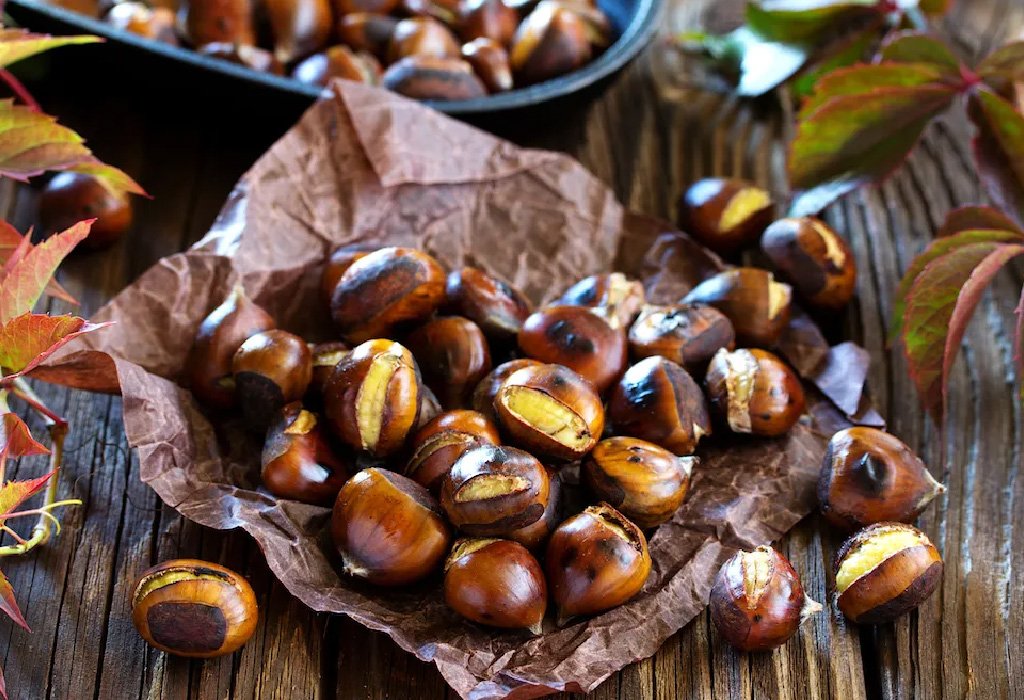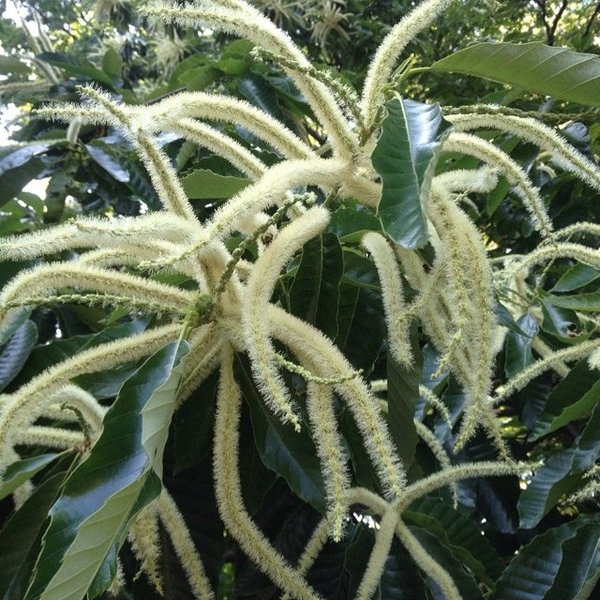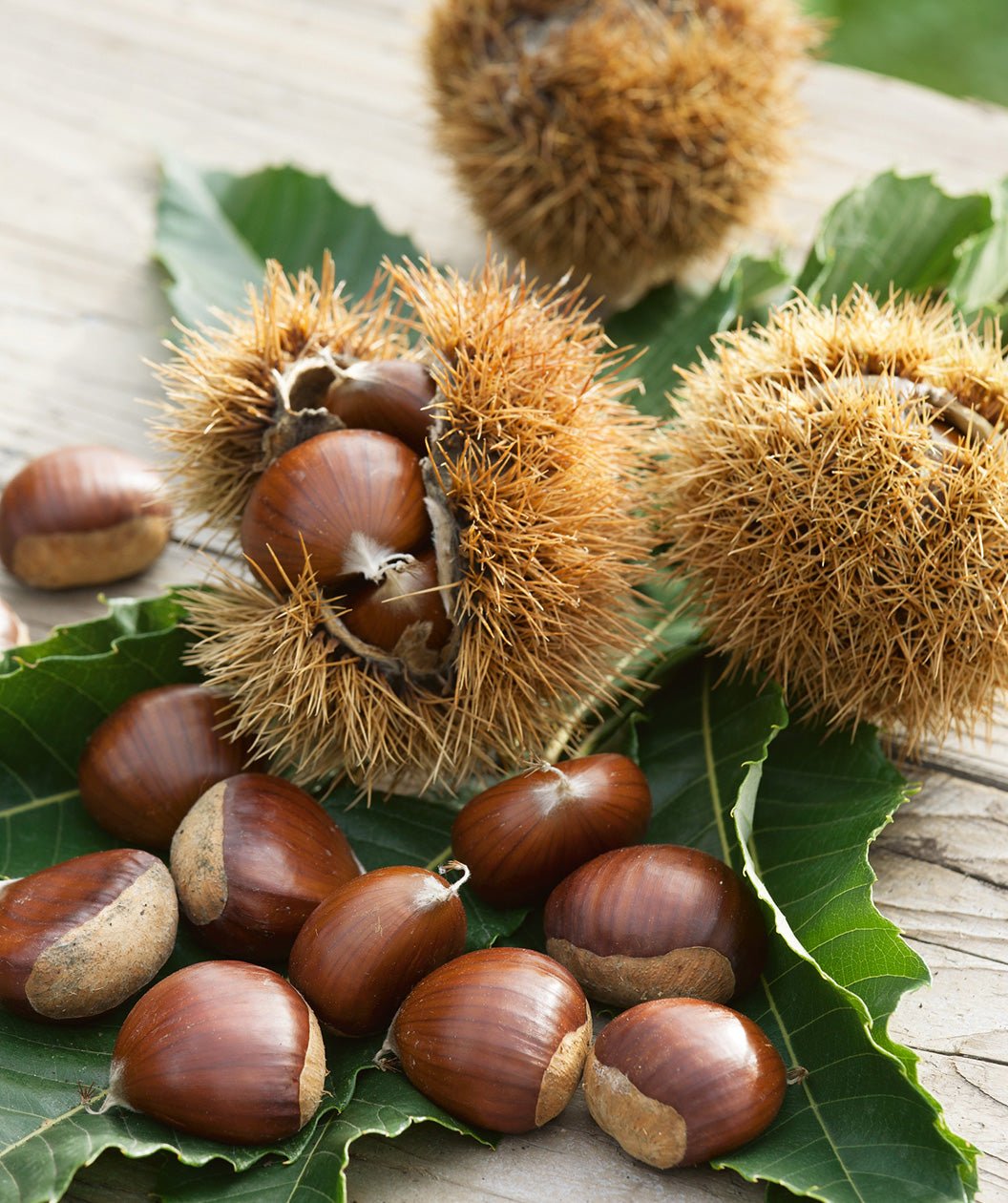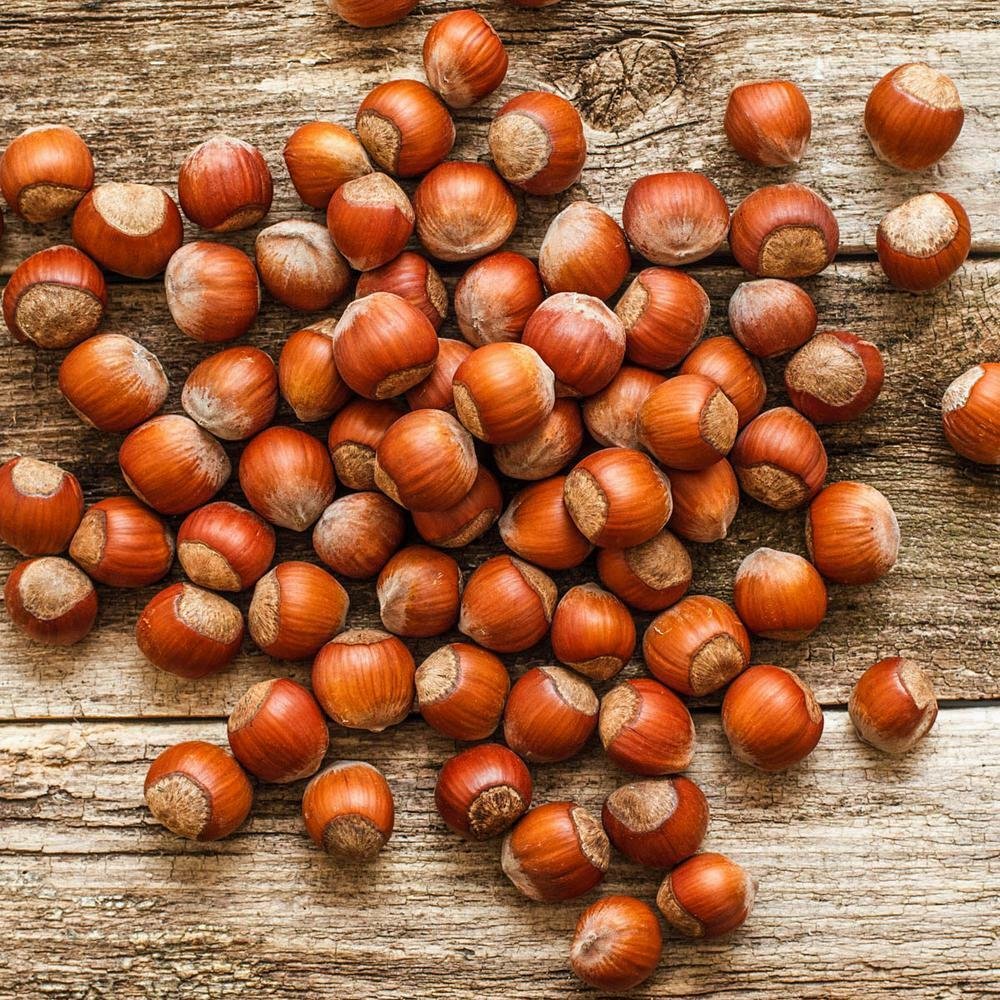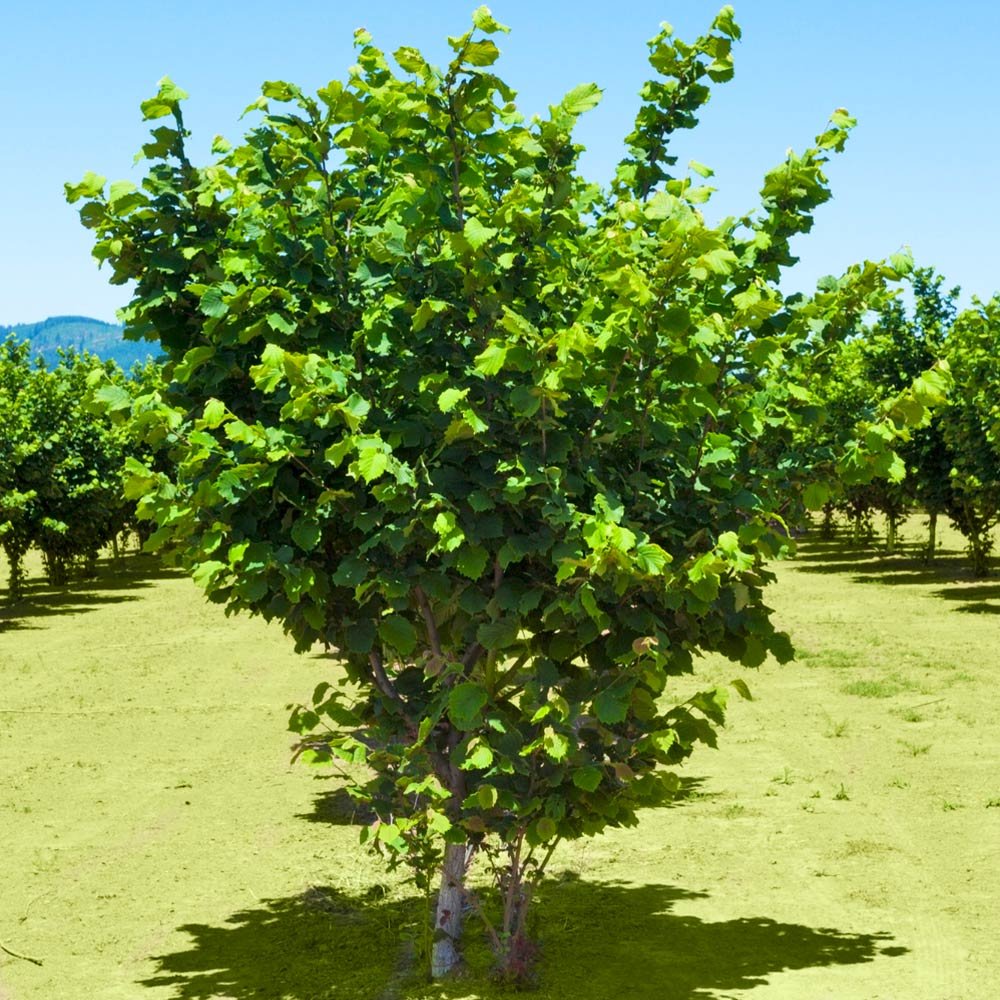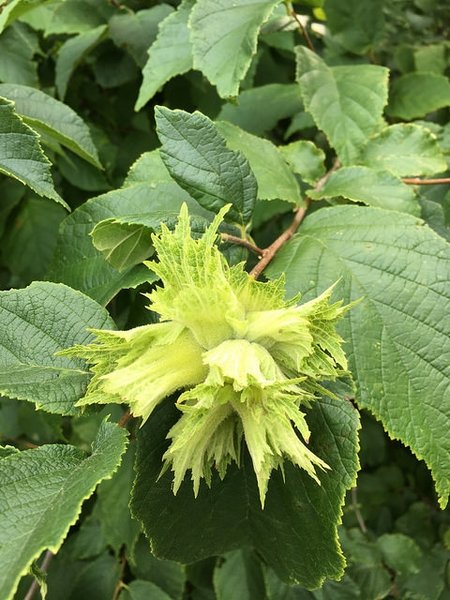Chestnut trees are prized for their large, meaty nuts that are rich in carbohydrates, fiber, and nutrients. These trees grow 40-70 feet tall with a 30-50 foot spread, preferring slightly acidic, well-drained soil and full sun. Chestnuts are harvested in the fall when the spiky husks split open, revealing the sweet, starchy nuts inside. The tree’s large, broad leaves provide excellent shade, and its catkin-like flowers add ornamental appeal in summer.
Native to North America (the American Chestnut) and Eurasia (the European, Japanese, and Chinese Chestnuts), chestnuts have been a staple food for centuries. The nuts were traditionally roasted, boiled, or used in soups, breads, and pastries. The American Chestnut was once a dominant tree in the eastern forests of North America, but it was nearly wiped out by the chestnut blight in the early 20th century. Today, efforts are underway to restore the original American Chestnut. Iin the meantime, hybrid American-European-Asian genetics have allowed Chestnuts to thrive in North America.
Chestnut trees are an excellent choice for gardeners looking for a long-term investment that provides both food and beauty. It will take 5-7 years to achieve a first harvest – but the trees will live for hundreds of years if well tended. In addition to the delicious nuts, the tree offers dense, attractive foliage and a beautiful canopy that provides shade. Chestnuts are easy to incorporate into edible landscapes and can be enjoyed fresh or roasted, or used in a variety of savory and sweet dishes. These trees also support wildlife by providing habitat and food for a variety of animals.
Zone Range: 4-8
Sun Requirements: Full sun
Size at Maturity: 40-70 feet tall, 30-50 feet spread
